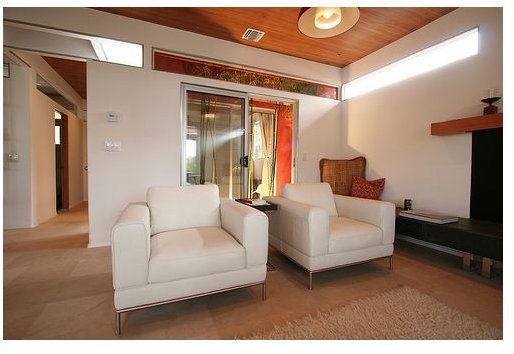Energy Efficient Housing Design for Insulation, Heating & Cooling in an Eco-Friendly Home
Energy Efficient Design Priority: How Airtight is an Eco-Friendly Home
The most important energy efficient design issue is how well a home is insulated and sealed to prevent open pockets of air. Time, diligence, and even money spent to cover this facet of building an eco-friendly home will save energy and money in the long run, and make expensive heating and cooling options impractical and unnecessary.
There are many different insulation materials to choose from, some with a negative impact on the environment, and others with a more subtle green footprint. Fiber glass for instance, is the most commonly used insulation material used in homes. It can be an irritant, and during manufacturing there are formaldehyde emissions. This chemical, which is a known carcinogen is also present in the material when used as insulation, and should be safely kept behind walls.
Air krete on the other hand is one of the most eco-friendly insulation materials. The magnesium dioxide from sea-water and ceramic talc, air krete has negligible impact on the environment in manufacturing, is safe for home air quality, and is incredibly fire and mold resistant. Both fiberglass and air krete are good insulation materials, although air krete has a consistent R-value (a material’s resistance to heat flow) of 3.9, while fiberglass varies from 2.2 to 4.0.
Aside from good insulation for an eco-friendly home, energy efficient living requires the an air barrier to block air flow from entering and exiting the home. This could mean a continuous layer of polyethylene, an extra layer of drywall, or a layer of rigid foam insulation with edges and joints carefully sealed.
Windows in an Eco-Friendly Home
High quality windows are also an essential component of energy efficient design. At their best, windows can act as insulation themselves, rather than an avenue for heat to escape and cold air to enter. Today, windows for an eco-friendly home can be coated with low-emissivity coatings, which block longer-wavelength heat from escaping, retarding the release of heat through windows. Another advancement in window design is the use of low-conductivity gases to seal the small spaces between panes of gas. Argon is the most frequently used low-conductivity gas seal, while windows made with krypton have an even higher quality energy efficient design.
Energy Efficient Heating
If a home is well insulated, if care is taken to make sure there are few pockets for air to escape, and with well-placed, eco-friendly windows to encourage sunlight to come into the home, and cold air to stay out, expensive heating systems are unnecessary in an eco-friendly home. A simple energy-efficient furnace that blows heat throughout the home is enough for energy efficient living.
There are other options, which can still be eco-friendly, although they entail a more involved intallation. Hydronic heating is where water is heated in a boiler, and than moved through the home. This method takes less energy to move heat than the forced-air heating of a furnace.
Radian-floor heating is sometimes used for energy efficient living, although it does take a lot of heat to warm a home, and once the heating process has begun, it takes time to fully stop once turned off, which can potentially waste a lot of energy. With radian-floor heating, specialized tubes are embedded in a poured concrete floor. Hot water moves through the tubing to warm the floors, which then warm the house.
Energy Efficient Cooling
The same concept for heating an eco-friendly home exists for cooling a home — the better the house is built in the first place, the less energy that will be needed to cool a home, and therefore the more energy efficient the design. Idealing, opening windows at night, closing them during the day, and blocking out the sunlight with curtains, and the shade of trees will do most of the cooling, leaving a central or room air conditioner to do only a small amount.
If using an air conditioner, look for one with a seasonal energy efficient rating (SEER) of at least 14; for room units, look for an energy efficient rating (EER) of at least 10.5. Another option is installing a whole-house fan on the top floor, turning it on during the night, and leaving the windows on the ground floor open.
Taking the time to examine these basic energy efficient design issues early on can lead to a greater potential for long-term energy efficient living.
Sources:
Wilson, Alex. “Your Green Home: A Guide to Planning a Healthy, Environmentally Friendly New Home.” (New Society Publishers, 2006).
photo credit: Jeremy Levine Design
This post is part of the series: Building a Green Home
Building a green home is an environmentally responsible, cost-efficient, and healthy choice for you and your family. However, there are a number of issues to address, from choosing a green home location, picking out a green architect, evaluating energy-efficiency issues and building materials.
